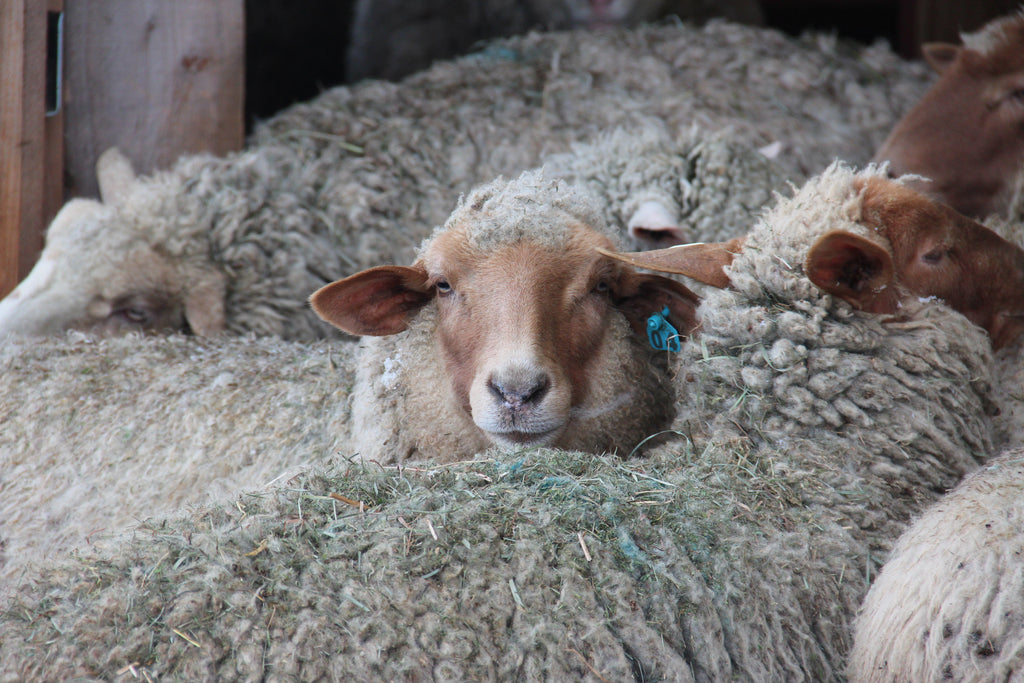
Spring is here! Enjoy the Tunis Breed in Lamb Season!
Tunis sheep are shaded tan to red with the occasional white spot on the tail or head. Their wool turns whiter and creamier in color as they age. Tunis produce a good amount of wool, meat, and milk, they are heat tolerant as well as cold tolerant, and the rams breed vigorously out of season, making them good members of the farm team! Taste notes for Tunis meat which has been celebrated gastronomically for millennia include earthy, minerally, buttermilk, light, and silky.
The Tunis is one of America’s oldest breeds and derives from early crosses between lamb that were already here, and the Tunis breed which arrived to these shores by way of the Barbary Coast and the coastal regions of central and western North Africa. The Tunis is also referred to as the Barbary sheep and can be traced to Tunisia, Libya, and Egypt but it can be found throughout the Middle East. In Biblical times the Tunis ancestor was referred to as the fat-tailed or broad-tailed sheep and renowned for providing wool for carpets as well as food.

After the Revolutionary War, at least one Barbary sheep was brought to these shores to Henry Laurens, a wealthy merchant who lived in the South where so many of our country’s great gastronomic traditions began. Descendants of these sheep ended up with Charles Ward Apthorp, Esq on the island of Manhattan in New York City and possibly grazed in Central Park. Other importations of the Tunis followed in the coming years thanks to American connections to the Barbary Coast. The first U.S. military land action overseas was executed by the U.S. Marines and Navy in 1805 at the Battle of Derna, at Tripoli. It was part of an effort to destroy control of the local waters by Barbary pirates. The opening line of the Marines’ hymn refers to this action: "From the halls of Montezuma to the shores of Tripoli.”
In 1799 contract negotiations to combat piracy included a caveat that a group of broad-tailed Tunis would be shipped to the Colonies and Captain Henry Geddes boarded sheep onto his man-of-war ship, Sophia. The animals didn’t fare well and only a ram and ewe survived — but she did continue to produce offspring until she was 16 years old. The breeding pair ended up on a farm owned by Judge Richard Peters of Belmont, Pennsylvania, who made the Tunis rams available for breeding. Descendants of Judge Peters' sheep became established in Maryland, Virginia, the Carolinas, and Georgia. Word spread that Tunis mutton was of excellent quality and that Tunis meat in general was sweet, juicy, savory, and highly marbled. Thomas Jefferson and George Washington among others were quick to get into the Tunis game.
Sonja Pyne writes in her informative Tunis History, “Jefferson became quite enamored of his and wrote that raising the breed “pure” was a “favorite object,” and especially valued the Tunis for their meat, “the most delicious I have ever tasted.” His sheep grazed the lawns of both the White House and his Monticello plantation. Unfortunately, two of Jefferson’s Tunis rams were killed by a Shetland ram – “[an] abominable animal,” he raged.”
George Washington reportedly used a Tunis ram to improve wool production. His Tunis/Leicester cross became known as the Arlington breed named after Martha Washington’s grandson’s home.
The Civil War all but destroyed the Tunis population in the South. But the livestock show circuit around the country in later decades proved invaluable for rescuing the breed from extinction. Later the large tail was bred out by a Pennsylvania farmer with the last name of Powell who bred in the Southdown breed that produced white wool and a breed that looks like the Tunis we know today.
We are in love with the Tunis breed because of its unrivaled marbled meat, but also because of its amazing history. Tunis is an ancient breed. Pyne writes that “Perhaps the earliest images of fat-tailed or broad-rumped sheep appear on a wall in Steenbokfontein Cave on the western Cape of Africa, their name rumbles through the Old Testament where a lamb, including its fat tail or rump, is a sacrifice required of Aaron’s sons as a peace offering to Yahweh; and images of these sheep decorate maps of Africa as early as the 16th century.” Centuries later the breed would become a means for wealthy landowners to improve the state of agriculture in the Americas.

